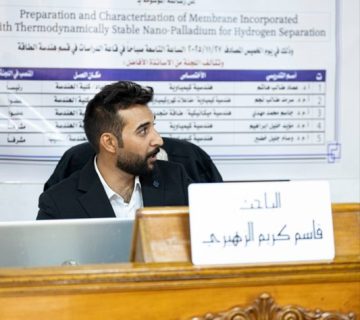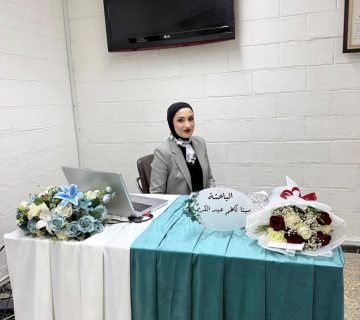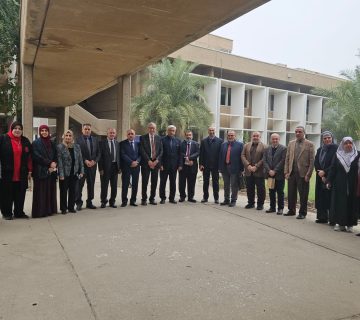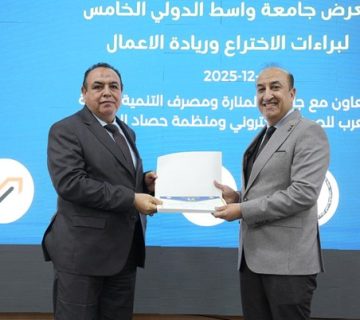It was conducted on Sunday, 29/10/2023, in Dr. Munther Al-Droubi hall the discussion of the master’s thesis of the student Israa Abed AL. Rrazak Mosleh, which is tagged:
” THE EFFECT OF COMBINED CYCLING IN PLANE SHEAR STRESS WITH TENSION LOADING ON DYNAMIC EDGE CRACK PROPAGATION IN A THIN “.
The discussion committee consisted of names listed below:
1- Prof. Dr. Mohsin A. Al. Shammari (Chairman)
2- Prof. Dr. Qassim A. Atiyah (Member)
3- Asst. Prof. Dr. Nassear R. Hmoad (Member)
4- Prof. Dr. Fathi A.A. Al. Shamma (Supervisor)
The aim of the thesis was to explore the importance and dangers of the occurrence of mechanical cracks in critical engineering applications. this type of crack that grows at the edge of the material, which is the case of the mixed mode cracks resulting from the first and second modes that spread in most structure and could be presented in this study analytically and experimentally. analytically, two equations were derived based on Griffith’s principle to balance energies and dynamic crack growth to find the crack growth rate through Steady-State on two types of aluminium alloys 6061 and 5052 within the Linear Elastic Fracture Mechanics theory (LEFM).
Experimental part, mechanical tests, Hardening Vickers tests, and chemical tests were carried out to analyse the proportions of components in aluminium alloys and to indicate their type and specifications. It was found that they fall within 6061 and 5052 at UNI- Standard system. The result show a good agreement ratios in finding the dynamic crack growth in the work aspects and the values of the Paris constants for the multi-axial fatigue showed close values, as well as the direction of crack growth, as it gave experimental results for the sample 6061, where the angle of trace for alloy 5052 ( 𝛉c = 23.7○ to 27.57○) experimentally and (24.92○) analytically (17.1) in computer program, while the angle of trace for alloy 6061 ( 𝛉c = 29.19○ to 35.217○) experimentally and (24.92○) analytically and (16.9○) in computer program.
After the scientific discussion by the members of the discussion committee, the researcher received a rating of (very good).








